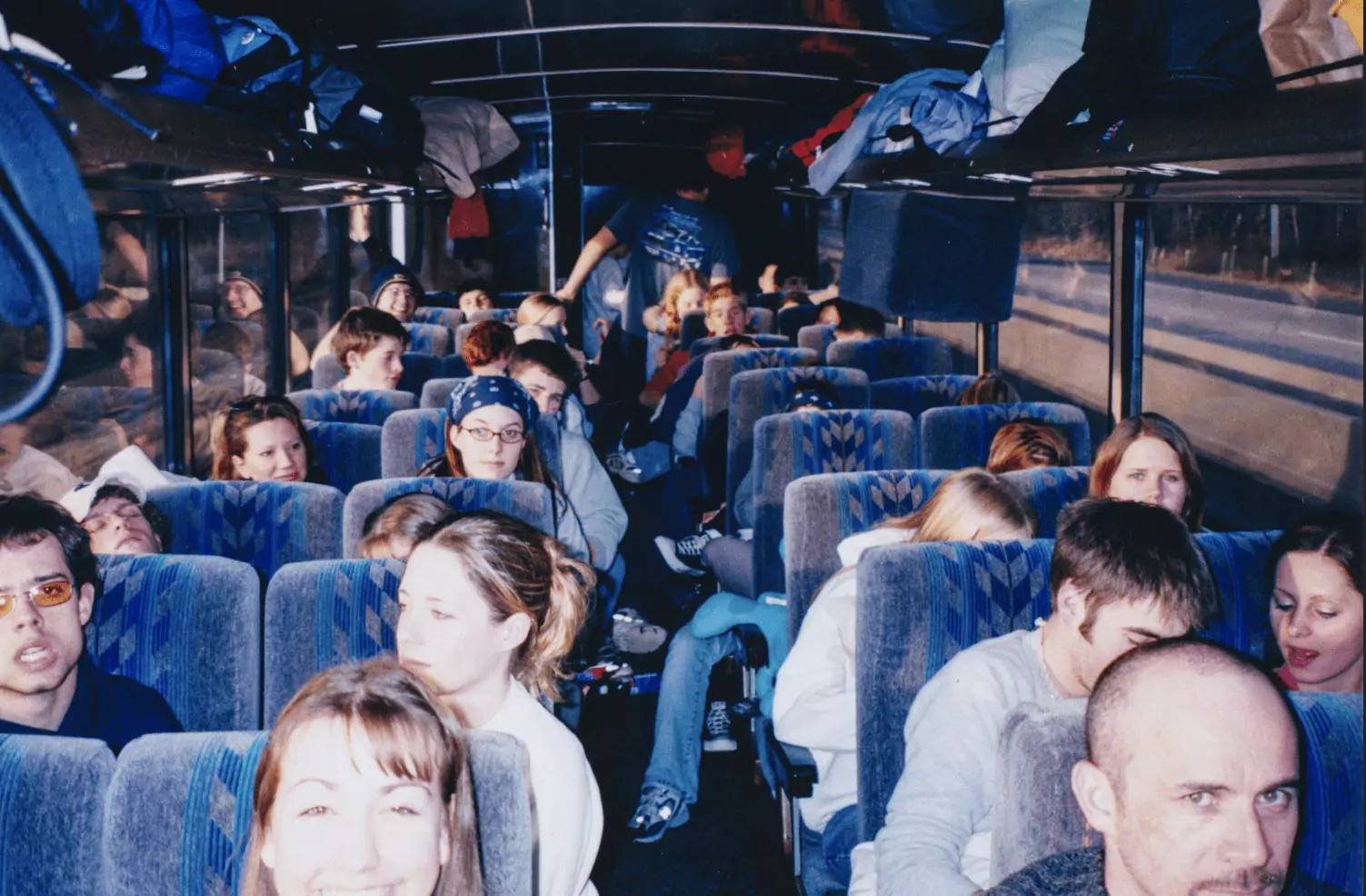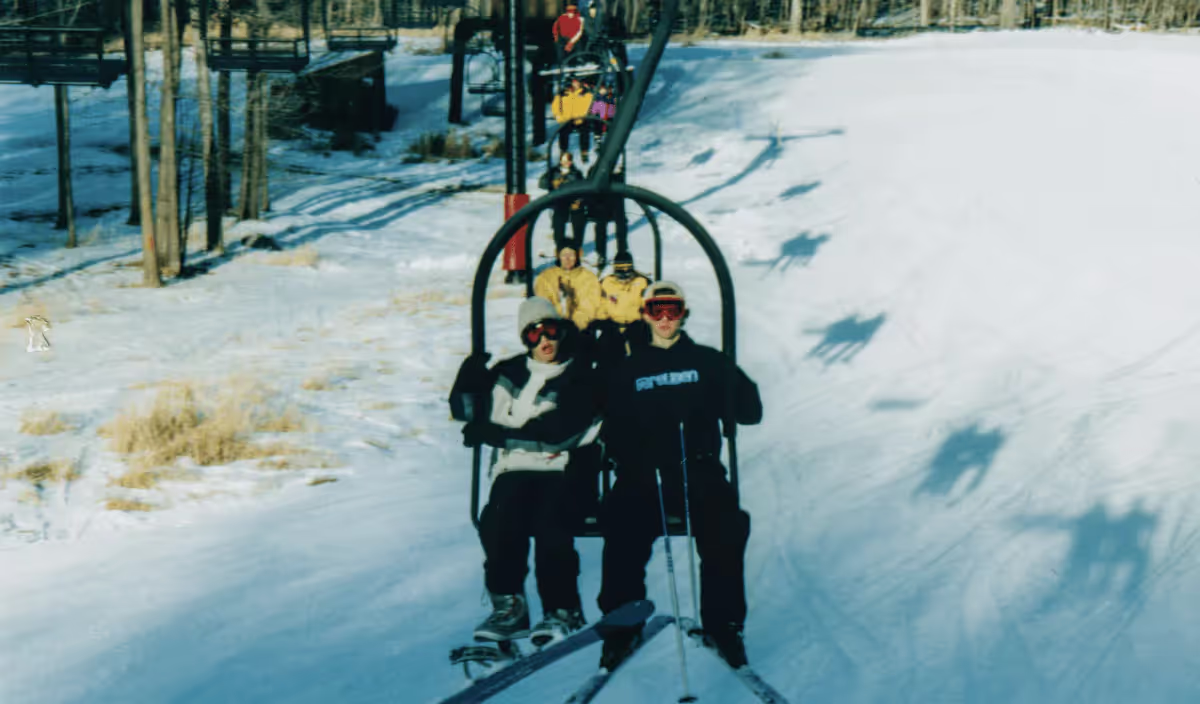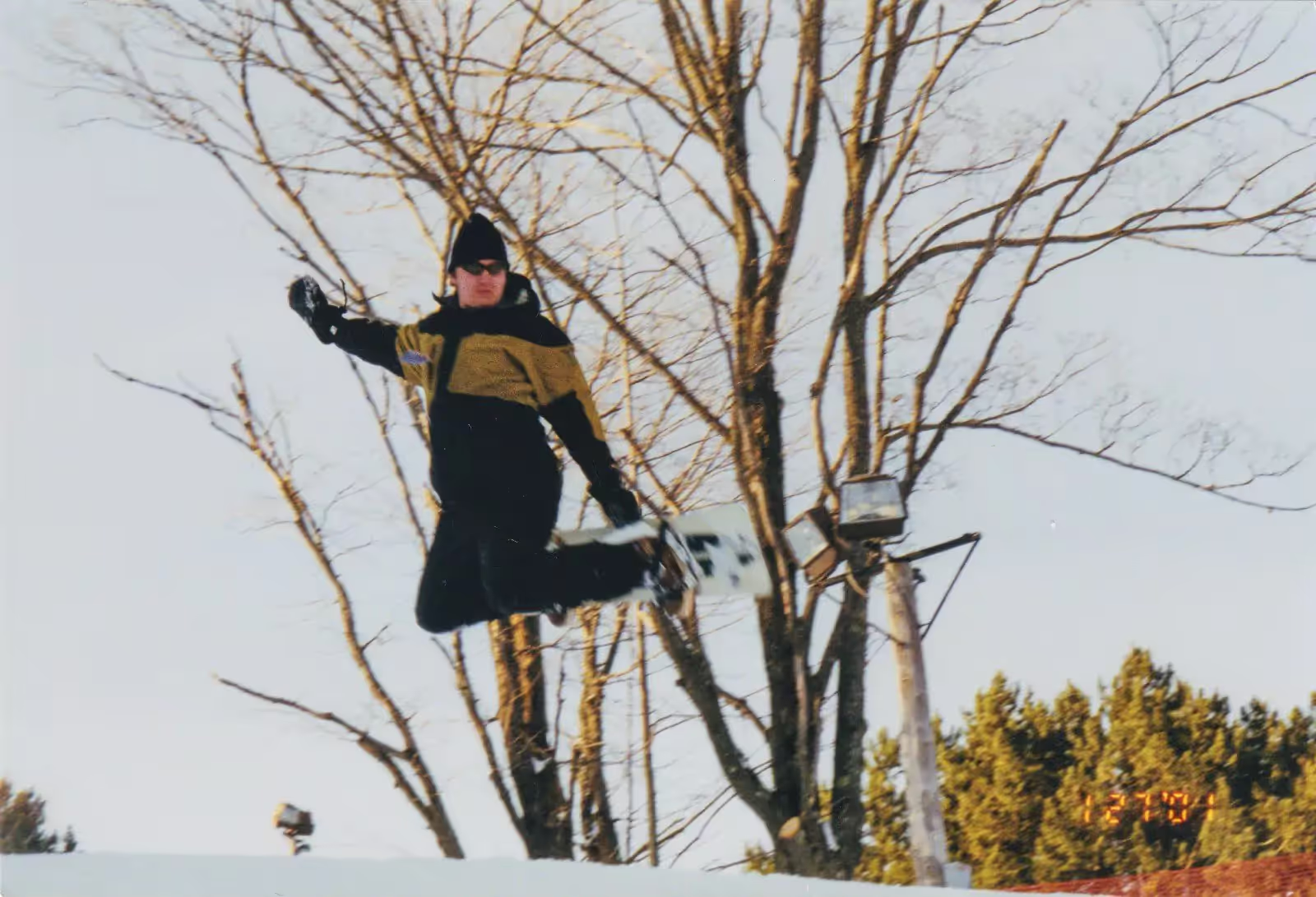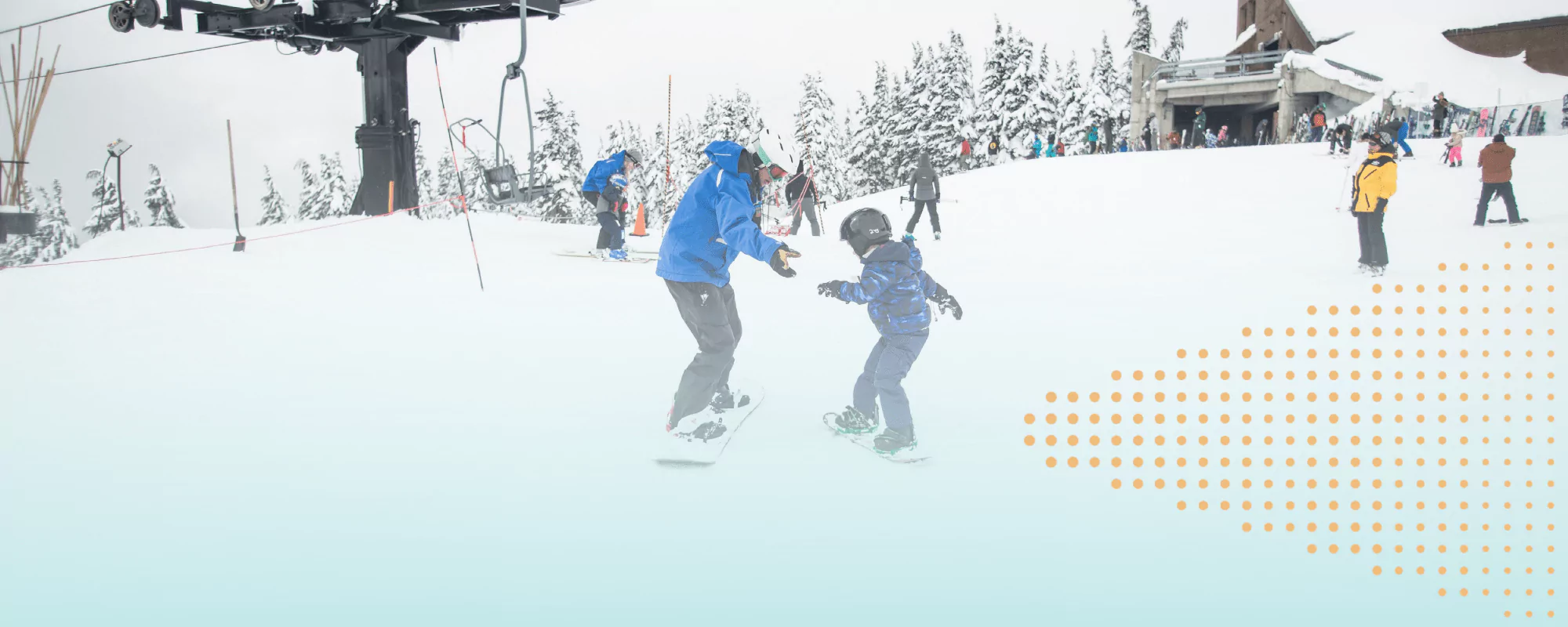When businesses pursue an innovative idea, they often bring a product to market too quickly. They invest invaluable dollars before interviewing, testing, or developing a prototype. At Highland, we’ve learned that innovation thrives in environments where risk is present, and the learnings are meaningful. Here, Mike Nowak, Product Strategist, shares how his experience learning to snowboard illustrates the importance of testing in meaningful learning environments.
When I was eighteen, I wanted to learn how to snowboard.
Unfortunately, living in the midwest didn’t exactly afford me many opportunities to do so. I had taken a couple of trips to the local garbage dump turned “mountain,” but hadn’t really experienced any success or progress.
In the Winter of 2001, I finally had my opportunity: our church youth group took a trip up further north into Wisconsin for our annual winter camp.

On the way to camp, we stopped for a day of skiing and snowboarding at Rib Mountain (now called Granite Peak), the closest thing you can get to real winter sport in the midwest. I borrowed a snowboard — I was determined that this would be the time I finally learned.
When we arrived at Rib Mountain I suited up in my winter gear and started to head out by myself, snowboard in hand, when one of the youth leaders, Gordy Persha, interrupted me.
Gordy: “Where are you going?”
Me: “The bunny hill. I don’t know how to snowboard.”
Gordy: “No way you can learn how to snowboard on the bunny hill! Come with me.”

Gordy led me up the lift to one of the intermediate blue square runs. We were skipping the bunny hill AND the friendly beginner green circle.
I was terrified.
This made no sense to me. If I couldn’t snowboard, didn’t it follow that a faster run was a dangerous place to be? Gordy explained that snowboarding is all about catching your edges. The opposite edges of the board are used for going different directions. You ride on the toe-side edge to carve to the right, and on your heal-side edge to carve to the left.
Prior to this trip and Gordy’s guidance, my goal on the makeshift bunny hill was just to ride flat down the hill without falling. Occasionally, I succeeded at staying upright, but Gordy helped me recognize that I was never going to actually learn anything taking this approach. I needed some speed and momentum to make real learning possible.

It turned out that Gordy was right.
Within the first fifteen minutes on the blue square run, in addition to taking some spills, I had finally learned what it actually feels like to catch an edge. We kept going and I learned what it feels like to switch from one edge to the other and carve back the other direction. By the end of the day, I was able to successfully carve back and forth down the blue square run without falling.
This unexpected level of success surprised me. I attributed my new ability to one factor: placing myself in a meaningful learning environment.

This same principle applies to the world of business innovation.
Too often companies start out with an idea, maybe gather a little data, and then proceed to bring something to market. This is the equivalent of spending a little time on the bunny hill on a converted midwest garbage dump and then deciding you were ready for a double black diamond in Colorado. Get ready to take some spills (unless you’re incredibly lucky).
The more reliable approach is how Gordy taught me to snowboard.
Companies looking to innovate need to seek out meaningful learning environments that help them learn something that aligns with the real world. This also involves some risk. You may find out that people don’t like your idea, or that it’s not quite right. This is like taking a minor spill on a blue square run. It’s one that you can recover from, learn from, and improve upon.
But take your idea straight to market (the double black diamond), invest a ton of time, effort, and money into it and you will be approaching dangerous territory. First off, you’ll run the risk of falling in love with your own idea, which will lead you to ignore evidence to the contrary that it’s not quite right. Second, you will find yourself in a place where you are likely to subscribe to a sunk cost fallacy, claiming that you’ve already invested so much and it only makes sense to keep going. These choices may result in a broken leg and the end of your snowboarding trip.
At Highland, we find that innovation thrives by hanging out in blue square kinds of spaces. Spaces where the risks—and therefore the learnings—are meaningful.
Try building a simple prototype, or better yet, three divergent versions, and then put those in front of real, potential customers (not friendlies, who may be inclined to think you just want to hear some praise or support). Then take and incorporate the feedback and do it again, until you can feel what it’s like to properly catch an edge. Until you can feel that you can control where you are going down that mountain. Then from there, you will be ready to move on to steeper and more challenging slopes.
This is the very blue square run where I finally learned how to snowboard.
How Highland approaches innovation
Over the years working with others to bring new products and services to market, we’ve learned that innovation is less pure inspiration, rather it’s a more deliberate and methodologically disciplined commitment to testing in meaningful learning environments. Here are a few things we recommend:
1. In-depth Interviews: Try conducting 45–60-minute interviews with people in your problem space to hear what sort of progress they are really seeking to make. Pay special attention to the circumstances surrounding their problems.
2. Journey Maps: Plot out the timeline that customers take to make progress in their lives. Don’t just map the time period where they interact with you, but go all the way back to when they became aware of a need in their lives. Pay special attention to the circumstances inherent in the journey. This fidelity of insight is what innovation is built on.
3. Design Sprints: Here you will clarify an idea and build a low fidelity prototype that you will test with real people. We haven’t found a better process yet for moving quickly from idea (ski lodge/bunny hill) to actual learning (hitting the blue square).
4. Build a Prototype: Even if you don’t go through the rigor of clarifying your idea with the recommendations above, you should always test a real prototype with real people. The resources for this are getting more advanced by the day. Using tools like Sketch, Invision, Webflow, Whimsical, and Figma are making it easier than ever to build something real-ish in just a day or two. Don’t ever skip this step because you think it will take too long. It’s not worth the risk of proceeding on to bigger efforts without the valuable feedback you’ll get.
Start with Something Engaging Clients Early via Collaborative Prototyping
5. Run a Pilot: At the end of the day, you need to find a way to set up the next step in doing something real. You have to test real conversion and real desirability. There is a famous cautionary tale from the airline industry. For years customer feedback indicated that people wanted more legroom and would be willing to pay for it. When airlines finally complied they learned that although people said they wanted this perk when push came to shove, they weren’t willing to pay extra for it. A limited pilot of some flights with this offering would have been a cheaper way to learn that the indications from early customer research weren’t actually going to pan out in the real world.
If you are interested in how we utilize Design Sprints, Jobs to Be Done, Prototype testing, and limited pilots to reliably produce innovation, we’d love to chat with you. We can help get you off the bunny hill and out to that blue square so we can really learn something.



